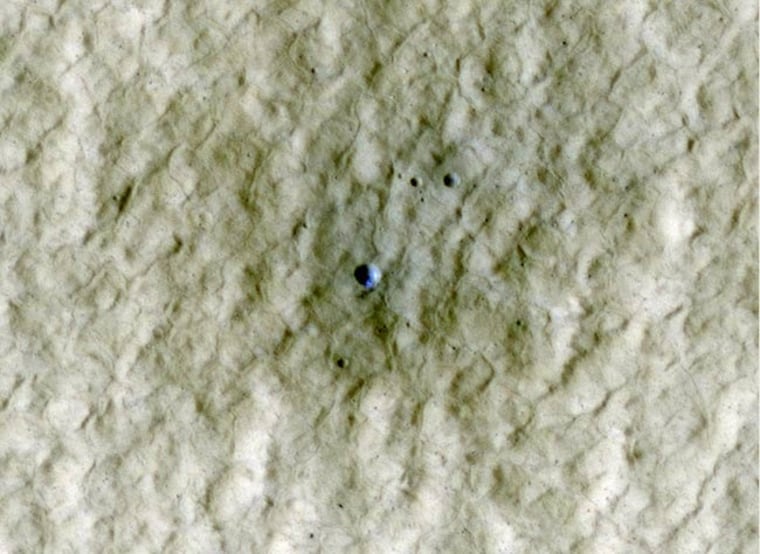A fresh crater on Mars has revealed a hidden cache of frozen water in some of the latest photos from a powerful NASA spacecraft.
A recent false color image from NASA's Mars Reconnaissance Orbiter clearly shows a patch of Mars water ice at the bottom of a 20-foot (6-meter) wide crater in the Martian surface. The photo came from the orbiter's high-resolution HiRISE camera.
The young crater is in the northern hemisphere of Mars. Scientists suspect it formed only recently, sometime between April 2004 and January of this year, said Nathan Bridges, a HiRISE science team member at the Applied Physics Laboratory.
Bridges said the icy crater is farther south than some other sightings of buried water ice. It appeared in one of hundreds of Mars photos taken between June 6 and July 7 of this year.
"It's showing we're getting ice pretty far south," Bridges said. "As we continue to look at these things it's a good way to determine where shallow ice is on Mars."
The ice patch covers an area of up to 20 square feet (2 square meters). It "is probably at the same depth and has a similar origin to that excavated by the Phoenix lander back in 2008," he wrote in an image description.
NASA's Phoenix Mars Lander touched down in the Martian arctic in May 2008 and found evidence of water ice just beneath the surface using a small scoop at the end of its robotic arm.
This also is not the first time ice-filled Martian craters have been found and photographed by the HiRISE camera.
The orbiting spacecraft first spotted exposed ice in Martian craters in August 2008 and scientists announced the discovery in September 2009. The ice did not last, it ultimately turned straight into vapor in a process known as sublimation. There is no definitive proof of liquid water on Mars today.
Scientists were surprised at the time to find the water ice was 99 percent pure, with just a smidge of Mars dust mixed in. A layer of ice could have remained insulated from the Martian environment for up to 400,000 years until an impact disrupted its protective covering, a team of Mars researchers said in 2009.
"That is why people think it's so pure, because it's fairly young and hasn been mixed in with other materials," Bridges said.
Come the next Martian summer Bridges said, the HiRISE team will likely take additional pictures to check up on the crater.
Editor's note: This story has been corrected to reflect that Nathan Bridges is based at the Applied Physics Laboratory at Johns Hopkins University in Maryland, and to remove an incorrect statement on the age of the water ice.
